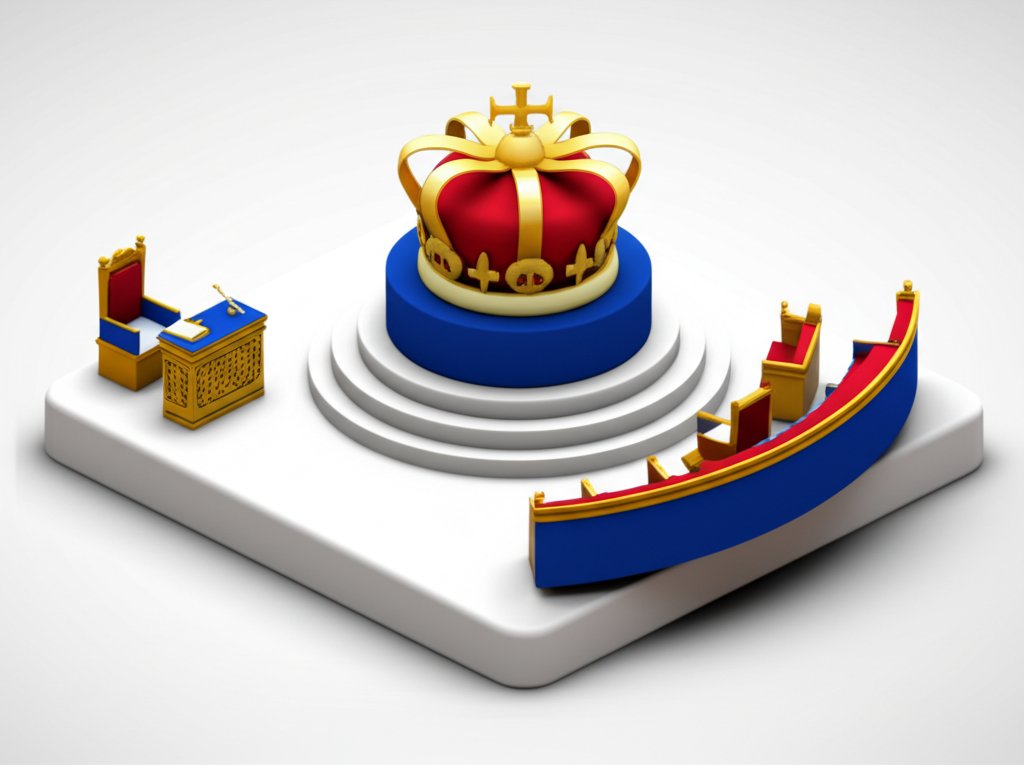Embark on a captivating journey through the annals of time, where ancient kingdoms gave way to powerful institutions, and the very fabric of a nation was woven through struggle and triumph. This definitive exploration into Sejarah Inggris (History of England) will illuminate the foundational Anglo-Saxon era, trace the enduring legacy and transformations of the Monarki Inggris (English Monarchy), and chronicle the extraordinary rise and ultimate supremacy of Parlemen Inggris (English Parliament). Prepare to uncover the pivotal moments, including the tumultuous Revolusi Inggris, that shaped one of the world’s most influential cultures and political systems.
The Dawn of a Nation: The Anglo-Saxon Era (c. 450 – 1066)

The true genesis of England as a distinct entity lies in the post-Roman period, giving rise to the Anglo-Saxon era. This period, often termed the Early Middle Ages, was a crucible where diverse Germanic tribes migrated, settled, and ultimately forged the linguistic, cultural, and political landscape that would become England.
From Roman Departure to Germanic Invasions
Following the withdrawal of Roman legions in the early 5th century, Britain was left vulnerable. Into this vacuum streamed Germanic tribes – Angles, Saxons, and Jutes – from continental Europe. These groups brought their own languages, customs, and polytheistic religions, clashing with and eventually integrating with the indigenous Romano-British populations. Their initial settlements gradually evolved into distinct kingdoms.
The Rise of the Heptarchy and Christianization
By the 7th century, the political map of Anglo-Saxon England was dominated by seven major kingdoms, collectively known as the Heptarchy: Northumbria, Mercia, East Anglia, Essex, Kent, Sussex, and Wessex. This era also witnessed the widespread adoption of Christianity, spearheaded by figures like St. Augustine of Canterbury, profoundly transforming society, art, and governance. Monasteries became centers of learning and culture, preserving knowledge in an often turbulent age.
Viking Raids and the Unification Efforts of Alfred the Great
From the late 8th century, a new threat emerged: the Vikings. Danish and Norse raiders ravaged coastal communities, eventually establishing large-scale settlements and exerting considerable control over parts of England, particularly in an area known as the Danelaw. It was against this backdrop that King Alfred the Great of Wessex (reigned 871-899) rose to prominence. His military prowess, legal reforms, and patronage of learning laid the groundwork for a more unified English kingdom, successfully pushing back Viking expansion and establishing a stronger Anglo-Saxon identity. His successors continued this work, leading to the gradual consolidation of various kingdoms into a single English realm.
Forging the Crown: Evolution of the Monarki Inggris (1066 – Present)

The Monarki Inggris stands as one of the oldest and most continuously operating monarchies in the world. Its history is a narrative of immense power, dramatic shifts, and gradual adaptation, profoundly shaping the nation’s destiny.
The Norman Conquest and Feudal Foundations (1066-1154)
The year 1066 marks a seismic shift in the history of England. William the Conqueror, Duke of Normandy, defeated the Anglo-Saxon King Harold Godwinson at the Battle of Hastings, fundamentally altering the English monarchy. William imposed a highly centralized feudal system, replacing the Anglo-Saxon aristocracy with Norman lords and introducing Norman French as the language of the court and administration. This conquest solidified the monarch’s power and established a durable framework for governance, distinct from its Anglo-Saxon predecessors.
Plantagenets and the Seeds of Constitutional Monarchy (1154-1485)
The Plantagenet dynasty, beginning with Henry II, further expanded royal authority and developed England’s legal system, including common law and trial by jury. However, this period also saw the first significant challenges to absolute royal power. The signing of the Magna Carta in 1215 by King John, forced by rebellious barons, was a landmark moment, establishing that even the king was subject to the law and laying early foundations for future constitutional limits on the Monarki Inggris. The Hundred Years’ War with France and the devastating Black Death further reshaped society and the monarchy’s role.
Tudors, Stuarts, and the Challenge to Divine Right (1485-1714)
The Tudor dynasty, initiated by Henry VII after the Wars of the Roses, ushered in a period of strong, centralized monarchy and national identity. Henry VIII’s English Reformation broke ties with Rome, consolidating the monarch’s religious authority. Elizabeth I’s reign saw England emerge as a major European power. However, the subsequent Stuart monarchs, particularly James I and Charles I, championed the concept of the Divine Right of Kings, leading to increasing conflict with Parliament regarding taxation, religion, and governance. This escalating tension would culminate in a period of unprecedented upheaval, including the Revolusi Inggris.
Hanoverians, Windsors, and the Modern Constitutional Monarchy
Following the Glorious Revolution, the Act of Settlement (1701) ensured a Protestant succession and further cemented Parliament’s power over the crown. The Hanoverian dynasty, beginning with George I in 1714, saw the Monarki Inggris gradually transition into a largely ceremonial role. Prime Ministers and parliamentary government became the dominant forces. Today, the House of Windsor provides continuity and a unifying symbol for the United Kingdom and the Commonwealth, embodying tradition and national identity while operating strictly within the confines of a constitutional monarchy.
Voice of the People: The Rise and Power of Parlemen Inggris (13th Century – Present)
The journey of Parlemen Inggris from a royal advisory council to a sovereign legislative body is a testament to the gradual, often contentious, evolution of democratic principles within England.
Early Assemblies and the Magna Carta’s Legacy
While Anglo-Saxon kings consulted with councils of wise men (Witenagemot), the direct origins of Parliament are traced to the Norman Conquest. Early Norman kings summoned great councils of powerful nobles and church leaders to advise them and approve taxes. The Magna Carta, though initially focused on baronial rights, contained clauses relating to taxation that required “common counsel of the realm,” foreshadowing the need for broader consent. Simon de Montfort’s Parliament in 1265 is often cited as a crucial early instance of burgesses (representatives from towns) being included alongside knights of the shires.
The Model Parliament and the Emergence of Two Houses
Edward I’s “Model Parliament” of 1295 is a key milestone, regularly summoning representatives from shires and boroughs alongside nobles and clergy. Over time, these representatives began to meet separately from the magnates, leading to the recognizable bicameral structure of Parlemen Inggris: the House of Lords (nobility and clergy) and the House of Commons (elected representatives). The Commons, representing a wider segment of society, gradually asserted its financial authority, particularly concerning approval of taxes.
From Tudor Assertion to Parliamentary Supremacy
During the Tudor period, Parliament’s role gained significant weight, especially during the Reformation when it legitimized Henry VIII’s break from Rome. However, it was the Stuart era that saw the most dramatic struggle for power. The conflicts between Crown and Parliament over financial control, religious policy, and royal prerogative ultimately led to the Revolusi Inggris. Following the Glorious Revolution of 1688, the Bill of Rights (1689) explicitly limited royal power, guaranteed parliamentary rights (like freedom of speech for MPs), and established the principle of parliamentary sovereignty, making Parlemen Inggris the supreme legal authority.
Modern Parliament and Democratic Expansion
The 18th and 19th centuries saw Parliament consolidate its power, with the Prime Minister and Cabinet becoming the effective executive. The franchise slowly expanded through various Reform Acts, moving from a narrow electorate to near universal adult suffrage by the early 20th century. Today, Parlemen Inggris (now the Parliament of the United Kingdom) comprises the House of Commons and the House of Lords, standing as a globally recognized symbol of democratic governance, with the Prime Minister leading the government from the Commons.
Tumult and Transformation: The Revolusi Inggris and its Legacy (17th Century)
The 17th century was a period of profound political and social upheaval in England, culminating in the Revolusi Inggris – a series of events that forever altered the relationship between the Crown and Parliament and laid essential groundwork for modern democratic governance.
The English Civil War (1642-1651): Crown vs. Parliament
The seeds of the English Civil War were sown in the persistent disagreements between King Charles I, who firmly believed in the Divine Right of Kings and absolute royal prerogative, and Parlemen Inggris, which sought to limit royal power and assert its own authority, particularly over taxation and religious policy (Anglicanism vs. Puritanism). By 1642, negotiations broke down, leading to armed conflict between the Royalists (Cavaliers) and Parliamentarians (Roundheads). The Parliamentarian forces, notably Oliver Cromwell’s New Model Army, ultimately triumphed.
The Execution of a King and the Commonwealth
The war saw the capture and trial of King Charles I, accused of treason against his people. In an unprecedented act, he was executed in 1649, sending shockwaves across Europe. England was declared a republic, known as the Commonwealth, first under parliamentary rule and later under the Protectorate of Oliver Cromwell. This period, though short-lived, demonstrated that a monarch was not beyond the reach of the law and that the people, through Parliament, could challenge and even overturn royal authority.
The Restoration and the Glorious Revolution (1660 & 1688)
After Cromwell’s death, the monarchy was restored in 1660 with Charles II, son of the executed king. While the monarchy returned, the underlying tensions with Parliament remained. His successor, James II, a Catholic, further exacerbated fears of absolute rule and a return to Catholicism. This fear, coupled with his arbitrary actions, led to the “Glorious Revolution” of 1688.
A Bloodless Coup and the Bill of Rights
Parliament invited the Protestant William of Orange (James II’s son-in-law) to invade England. James II fled, and William and Mary were offered the throne on condition that they accept the Declaration of Right, which was codified as the Bill of Rights in 1689. This “bloodless” revolution firmly established parliamentary supremacy, cemented fundamental civil liberties, limited the powers of the monarch, and ensured a Protestant succession. The Revolusi Inggris, through these two distinct phases, fundamentally reshaped the British political landscape, ensuring that future monarchs would rule with the consent of Parliament.
Global Power and Modern Challenges: England’s Later Eras (18th Century – Present)
Building on the foundations laid by the Anglo-Saxons and refined through centuries of monarchical and parliamentary evolution, England embarked on an era of unprecedented global influence and internal transformation.
The Expansion of Empire and the Industrial Revolution
The 18th and 19th centuries witnessed the zenith of the British Empire, a period of vast territorial expansion, global trade, and cultural dominance. Simultaneously, England was the birthplace of the Industrial Revolution, a transformative era that revolutionized manufacturing, agriculture, and transportation. This brought immense wealth but also profound social changes, urbanization, and new challenges related to poverty and working conditions. The Monarki Inggris, while still a symbol, increasingly observed the rising power of Parlemen Inggris to manage these new complexities.
World Wars, Decolonization, and a Changing Identity
The 20th century saw England, as part of the United Kingdom, play crucial roles in two World Wars, which profoundly impacted its economy, society, and global standing. The post-war era was marked by decolonization, as the British Empire gradually dissolved, and the rise of a welfare state. Membership in the European Economic Community (later the European Union) further integrated England into a broader European framework, though this relationship would later see its own challenges.
Contemporary England: A Modern Nation with Deep Roots
In the 21st century, England continues to navigate its role on the global stage, facing economic fluctuations, social diversification, and ongoing debates about national identity and devolution within the UK. Yet, through all these transformations, the echoes of its past remain potent. The legacy of the Anglo-Saxon foundations, the enduring symbolism of the Monarki Inggris, and the democratic power of Parlemen Inggris continue to shape the narrative of this compelling nation. The depth and richness of Sejarah Inggris offer invaluable lessons for understanding the world today.
Conclusion: The Enduring Tapestry of English History
From the fragmented kingdoms of the Anglo-Saxon era to the powerful constitutional framework forged by the Revolusi Inggris, the Sejarah Inggris is a compelling narrative of continuous evolution. The dynamic interplay between the symbolic continuity of the Monarki Inggris and the legislative authority of Parlemen Inggris has sculpted a unique political identity. Understanding these historical threads is not merely an academic exercise; it is key to comprehending the values, institutions, and global influence that define England today. Dive deeper into this rich heritage and discover the profound impact of its past on its present.
FAQ (Frequently Asked Questions)
Q1: What defines the Anglo-Saxon period in the Sejarah Inggris?
A1: The Anglo-Saxon period (c. 450-1066 CE) marks the formative era of England following the Roman departure. It is characterized by the migration and settlement of Germanic tribes (Angles, Saxons, Jutes), the establishment of kingdoms like the Heptarchy, the spread of Christianity, and the eventual unification efforts against Viking invasions by figures like King Alfred the Great. This era laid the linguistic and cultural foundations of English identity.
Q2: How did the Monarki Inggris evolve from absolute power to a ceremonial role?
A2: The Monarki Inggris began with considerable power, especially after the Norman Conquest. Over centuries, pivotal events like the signing of the Magna Carta (1215), the English Civil War (1642-1651), and particularly the Glorious Revolution (1688) with its subsequent Bill of Rights (1689), progressively limited royal authority. These events transferred legislative power to Parlemen Inggris, transforming the monarch into a constitutional head of state, reigning but not ruling.
Q3: What were the key stages in the development of Parlemen Inggris?
A3: Parlemen Inggris began as royal advisory councils (Great Councils) in the post-Norman era. Key developments include Simon de Montfort’s Parliament (1265) and Edward I’s “Model Parliament” (1295), which saw broader representation from shires and boroughs. It evolved into two houses (Lords and Commons) and gradually asserted its financial and legislative authority, culminating in its supremacy over the Crown after the Glorious Revolution of 1688 and the Bill of Rights (1689).
Q4: What is meant by the “Revolusi Inggris” and what were its main outcomes?
A4: The Revolusi Inggris primarily refers to the period of political and social upheaval in 17th-century England, encompassing the English Civil War (1642-1651) and the Glorious Revolution (1688). Its main outcomes were the temporary abolition of the Monarki Inggris (leading to the Commonwealth), the execution of King Charles I, and ultimately, the permanent establishment of parliamentary supremacy, limited monarchy, and civil liberties enshrined in the Bill of Rights.
Q5: What was the lasting impact of the Anglo-Saxons on English language and culture?
A5: The Anglo-Saxon tribes brought the Germanic dialects that formed the basis of Old English, which evolved into modern English. They also contributed a significant portion of core English vocabulary, place names, and foundational legal and social concepts. Their literature, such as Beowulf, and their artistic traditions (like intricate metalwork) laid crucial cultural groundwork for the developing English nation.










